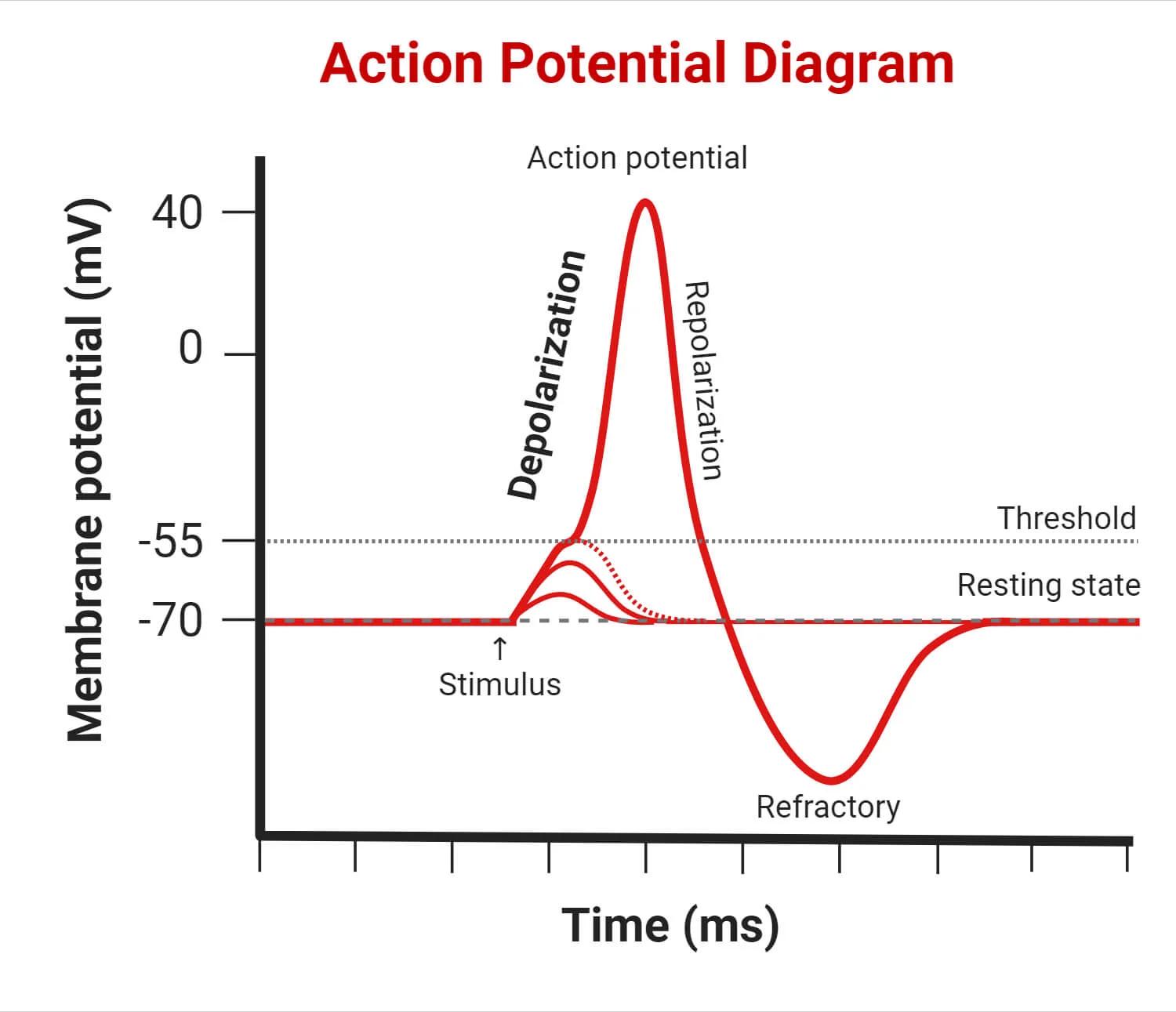Depolarization and Repolarization Drive Signal Transmission in Neurons
- An action potential is a temporary change in the electrical charge across a neuron’s membrane.
- It allows the neuron to transmit a signal along its length.
- This process involves depolarization (the inside of the cell becomes more positive) and repolarization (the return to a negative resting potential).
- These changes are mediated by voltage-gated sodium (Na⁺) and potassium (K⁺) channels and require a threshold potential to initiate.
Depolarization
A change in the membrane potential of the presynaptic neuron, making it more positive.
- Depolarization is an all-or-nothing event.
- If the threshold potential isn’t reached, the neuron remains at rest.
Repolarization
The phase in which the membrane potential returns to a more negative state as potassium ions exit the neuron.
Steps in Depolarization and Repolarization
Resting Potential
- Before the action potential, the neuron is at its resting potential (around -70 mV), where the inside of the cell is negatively charged compared to the outside.
- The resting potential is maintained by the sodium-potassium pump and the selective permeability of the membrane.
Threshold Potential
- The action potential begins when the membrane potential reaches a critical value called the threshold potential (usually around -55 mV).
- This is the point at which voltage-gated sodium channels open.
- If the threshold is not reached, no action potential will occur, this is called the all-or-nothing response.
Threshold Potential
The critical membrane potential that must be reached for the action potential to be initiated.
Depolarization
- Voltage-gated sodium channels open in response to the membrane reaching the threshold.
- This allows Na⁺ ions to rush into the cell, making the inside of the neuron more positive.
- This rapid influx of sodium ions causes the membrane potential to rise sharply from around -70 mV to a peak of about +30 mV, which is known as the depolarization phase.
Repolarization
- Once the membrane potential reaches the peak, the voltage-gated sodium channels close, and the voltage-gated potassium channels open.
- Potassium ions (K⁺) move out of the neuron, restoring the negative charge inside the cell, which is the repolarization phase.
- The exit of K⁺ ions causes the membrane potential to return to a more negative value (around -70 mV).

Hyperpolarization
- After repolarization, the membrane potential temporarily becomes more negative than the resting potential, which is called hyperpolarization (about -80 mV).
- This is due to the continued outflow of K⁺ ions through potassium channels.
- Eventually, the sodium-potassium pump restores the resting potential by pumping Na⁺ out and K⁺ in, returning the neuron to its resting state.




